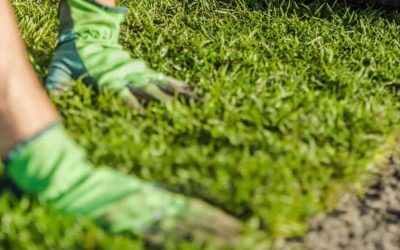Lawn Fertiliser
Quick Links
Everything You Need to Know About Lawn Fertilisers
There are many different types of lawn fertilisers and soil types to choose from for your lawn, all work differently.
For example, sandy soil fertilisers leach quickly, and more applications are needed to do the job, whereas heavy clay soil fertilisers last longer because they retain moisture for longer and feature slower water movement.
As all lawn fertilisers products work differently, some require plenty of water upon application and immediately develop lawn growth and others are controlled release and work over a longer period of time.
How Do You Fertilise A Lawn?
For the most part, fertilising your lawn is pretty straight forward.
You take the lawn fertiliser and disperse it throughout your lawn accordingly depending what type of lawn fertiliser you have chosen.
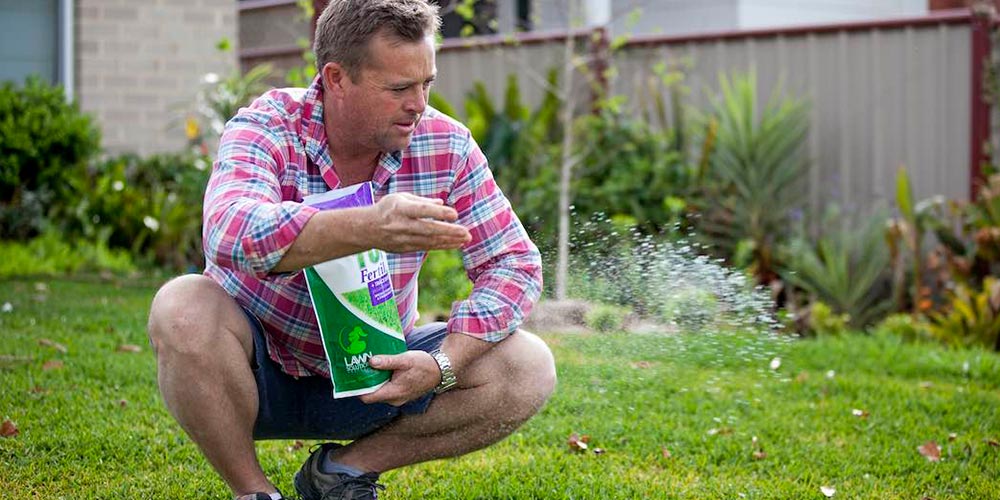
Whilst fertilising your lawn may seem easy, there are still some common mistakes that can become detrimental to your lawn care.
Common Fertiliser Mistakes
Your lawn will require constant love and care to allow it to grow and maintain a healthy life, however too much love and care can quickly be detrimental. Be careful not to make any of these common fertiliser mistakes:
Over Fertilisation Of Your Lawn
Lawns love nitrogen and need it to grow, however, if they have too much nitrogen it can burn your grasses.
Whilst regularly fertilising your lawn may seem like a good idea, the more you fertilise your lawn, the more nitrogen you are adding.
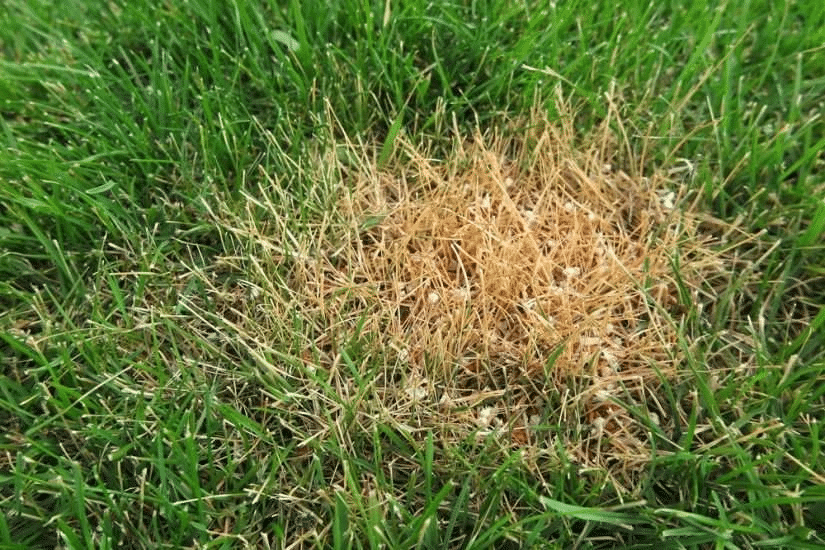
The problem occurs when the roots don’t experience the same amount of surge growth as the leaves do.
The root development then becomes unable to supply the water and nutrient delivery that the grass needs.
Signs You May Have Over Fertilised Your Lawn
- Fertiliser burn
- Discoloured leaves
- Darkened and weak roots
- Salt like crust on the soil
Erratic Fertilisation
The fertilisation you chose is very important, however it is not the only aspect to consider, you will also need to think about the application rate.
Fertiliser will need to be distributed evenly. An easy way to ensure that fertiliser is distributed evenly, is by walking back and forth across a lawn with a spreader, the will ensure a consistent application rates.
Not Enough Water
Not only do you need to ensure you are regularly fertilising your lawn, but also make sure you are watering regularly and not leaving your lawn thirsty.
A lawn without enough water can lead to grass burns. After you have fertilised your lawn, it is imperative you water the grass after.
Too Much Water
Similarly, to not watering your lawn enough after fertilising, if you water too much, you can wash the fertiliser away and it won’t have the chance to effect on your lawn.
When To Fertilise
If your fertiliser isn’t working, you may think it is one of the common mistakes above, however there is another reason you may not be receiving your desired effect.
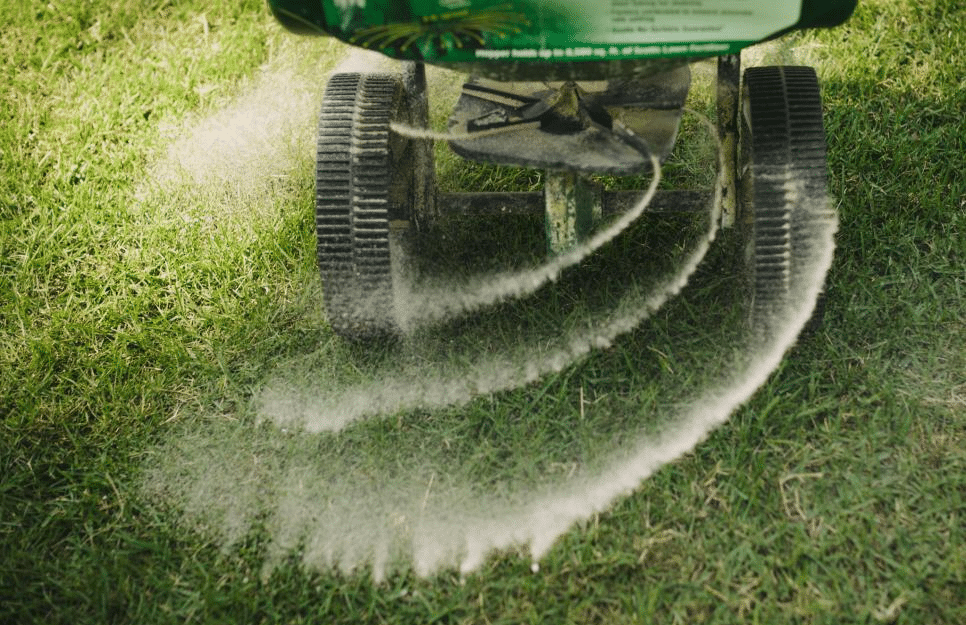
When you apply fertiliser is very important to its effectiveness. Your soil needs to consistently be above 14°C before fertiliser can help your lawn looking healthy.
It is also important that your grass is actively growing and out of its winter dormancy before it will benefit from fertiliser.
Month By Month Lawn Care Calendar
September Till November – Spring
This is a very important time of year for your lawn, as your lawn breaks the winter dormancy.
By applying fertiliser now, you assist the lawn to jump into growth mode as the weather warms up.
December Till February – Summer
Fertilising during this season helps maintain an even growth pattern throughout your lawn.
Most fertilisers have added minor nutrients, these work on ensuring your lawn has the correct balance of nutritional requirements, and your soil ph is optimal.
March Till May – Autumn
Fertilising in these months helps prepare your lawn for the upcoming winter season.
This is the most important fertilisation of the year; it encourages prolonged growth and extended colour.
A thick coverage helps keep your lawn looking green and vibrant even during its dormant months.
June Till Autumn – Winter
During the winter months, your lawn is dormant and doesn’t grow, however, this doesn’t mean that you shouldn’t touch your lawn.
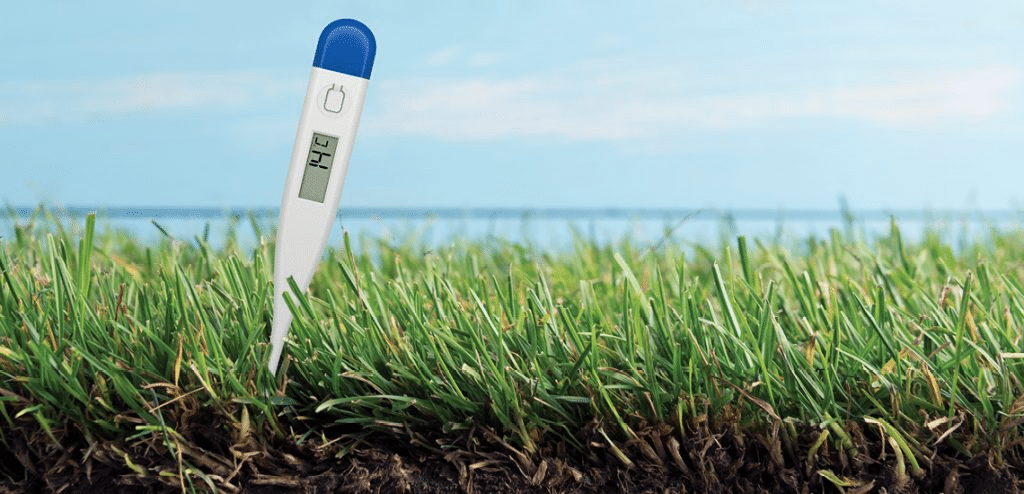
Applying slow-release fertiliser at the beginning of winter will give it a boost until it goes into hibernation and help it stay green for longer during these cold months.
What Is The Best Fertiliser?
There are so many different types of lawn fertiliser products available to choose from, it can be difficult to know which one is best.
From organic to chemically blended and slow release to liquid sometimes it’s hard to know where to start.
Depending on your types of lawn (buffalo, kikuyu, couch) there are pros and cons to each type of product.
Most conventional fertilisers, including liquid and foliar fertilisers, provide immediate soluble nutrient load. These are fast-acting however, they have a short-term effect.
Controlled Release Fertilisers
Controlled release is a term that is used to describe fertilisers that slowly released nutrition into the soil, this is done by the fertilisers having an outer polymer, polymer-sulphur or resin coating.
This coating allows the fertiliser to release the nutrient load daily over different periods, whether that be over 2, 6, or 8 months.
Slowing and controlling the release of nutrients has many benefits, including:
- One application can help feed the turf for multiple months.
- Fewer applications are needed.
- It is less likely the application will burn the turf as the nutrients are not immediately soluble.
- Growth is even as nutrients are released daily.
- Nutrient run off is less likely .
- Rainfall won’t empty the soil of nutrients.
- NPK ratio level is better
Slow-Release Fertilisers
Slowly releasing your fertilisers are similar to controller release lawn fertilisers in that their advantage is that they slowly release nutrients into the soil over a longer period of time.
However, slow-release fertilisers don’t have an exterior coating, instead, they are partially insoluble.
As the fertiliser takes longer than usual to dissolve in the soil it delivers over a longer period.
Granular Fertilisers
One form of slow-release lawn fertilisers are granular fertilisers. These type of lawn fertilisers are extremely popular, as it is one of the easiest to apply.
Your lawn roots absorb nutrients in liquid form, so these are slower to deliver , as they must first break down and dissolve. Slow-release products are almost always better value for money!
Make sure you use the right amount for your lawn and spread it out evenly. It is also imperative that you water in the lawn fertilisers, if you don’t use enough water you risk burning the leaf on your lawn.
Liquid Fertilisers
Applying liquid lawn fertilisers will provide a much quicker response from your grass. The roots almost immediately absorb the nutrients, giving the lawn an almost immediate boost.
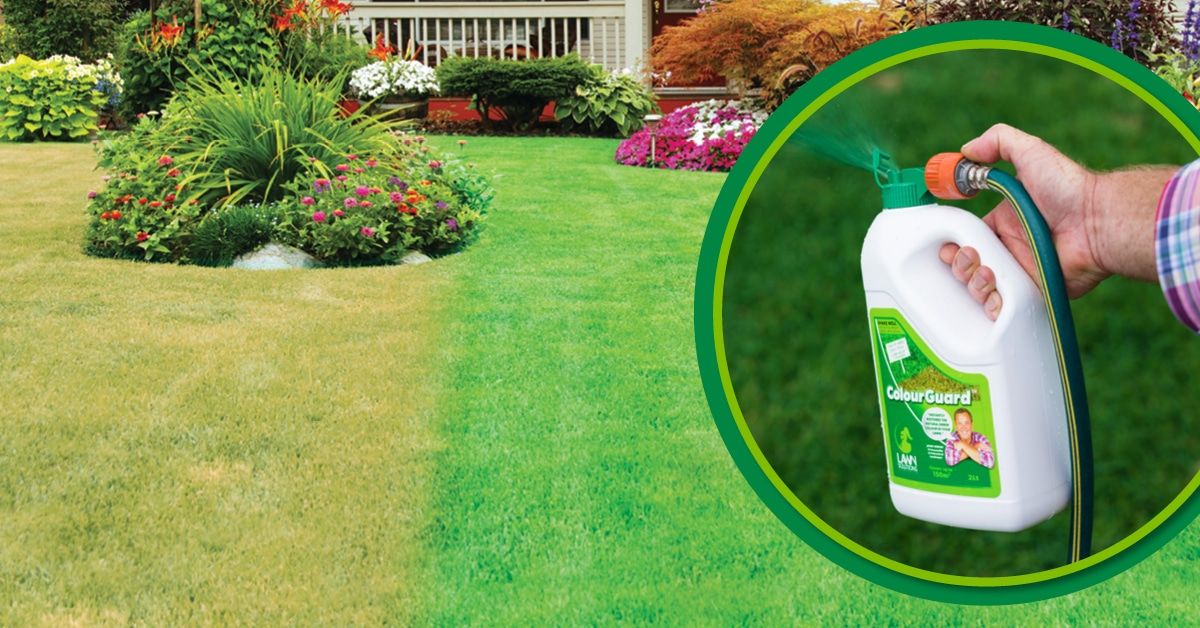
Another time you might want to utilize liquid lawn fertilisers is straight after mowing, by applying a liquid fertiliser then you can reduce foliar stress to the leaf.
As liquid fertilisers products are fast-acting they have a shorter lifespan, and you will need to apply the product more often to maintain your lawn. This can quickly increase the cost of maintaining your lawn.
Combination Fertilisers
There is no rule that says you must only use one fertiliser. Whilst you never want to over fertilise your lawn by applying too much, you can strategically combine the fertiliser products you use.
We normally recommend that you use a form of controlled or slow-release fertilisers 3-4 times a year. This fertiliser will maintain the overall health of your lawn.
Liquid fertilisers products can be mixed into your lawn regime as a ‘quick-win’ to add some extra green when required or to combat heat stress in the summer.
Will Fertilisers Harm My Pet?
Always check the product label before distributing fertiliser, and if you are unsure about the safety of a product – confirm with your supplier before applying it.
Granular fertiliser can often be mistaken for dog food and liquid fertiliser can be mistaken for water.
As these products can be easily mistaken, you should always store them out of reach of your pets.
It is also best to keep your pets indoors whilst you fertilise your lawn and keep them off your lawn for 24 hours after application.
Most pets find it difficult to access granular fertiliser once it is watered into the lawn, except for chickens.
Chickens can source granules lower in the turf profile than other animals.
Therefore, you should either only distribute in areas where your chickens don’t roam or only let them on the lawn after the granules have dissolved.
Liquid fertilisers are far less likely to harm your pets, once they are dried on your lawn then you can safely let your pets roam freely.
Therefore, you should either only distribute fertiliser in areas where your chickens don’t roam or only let them on the lawn after the granules have dissolved.
Liquid fertilisers are far less likely to harm your pets, once they are dried on your lawn then you can safely let your pets roam freely.

read more!
recent posts
How To Recover A Lawn After Flooding
Get expert tips on draining excess water, removing debris, proper mowing, fertilization, and post-recovery care to ensure a lush, green lawn
Recent Floods – Our Turf is Unaffected!
While recent floods have impacted many, our turf remains pristine and unaffected. Order today to guarantee the best for your garden!
Turf Sizes and Turf Rolls
The size of turf refers to the dimensions of the individual rolls or pieces of grass that make up your new lawn.
Soft Leaf Buffalo Grass
Find out why soft-leaf buffalo grass is such a popular lawn choice in Australia, the number 1 buffalo grass choice and how to look after a new soft-leaf buffalo lawn.

Our Turf
TifTuf Bermuda
Buy Turf Online © 2019 All Rights Reserved. | Proudly Designed and Developed by Sydney ICT



